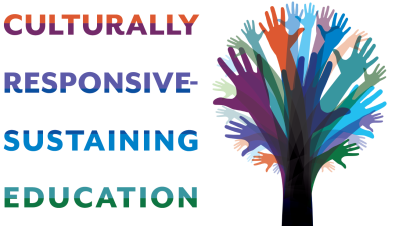Making Family and Community Engagement Part of the Process
Article from Gretchen Rymarchyk
A resource for Phase 2, Building Capacity of the Culturally Responsive-Sustaining Education Implementation Roadmap
Resource: Professional development for Family and Community Engagement from Learning for Justice
In order to build capacity for culturally responsive-sustaining education, it is critical to do more than include families and communities in conversations. Instead, we must seek out ways to increase connections with families, elevate family and community wisdom, and learn about community issues that impact classroom environments. Involving families and communities in decision-making and incorporating their cultures into the classroom and learning can increase overall collaboration between schools and communities. To do this work, it is necessary to identify strategies and specific next steps with families and communities.
I’m always looking for new ways schools to engage families because sometimes as schools create pathways to include families, they inadvertently create barriers that exclude others. Learning for Justice presents freely-available resources, sharing specific strategies and next steps for deepening understanding and incorporating culturally responsive practices from the classroom into the community. There are four one-hour self-paced seminars with handouts that teach about critical practices for anti-bias education, family engagement, and grassroots parent organizing. I am especially drawn to the second module, Critical Practices for Anti-Bias Education: Family and Community Engagement. It includes specific prompts for educators to consider on how to incorporate culture, guidelines for culturally sensitive communication, and detailed questions to use for interviews with students and families to learn more about their cultures, traditions, and languages. The modules emphasize how families and communities are usually willing to share their stories and perspectives with others—we just have to ask. As we incorporate families and communities into the classroom, students’ experiences become richer, and they feel more connected to both school and community. Learning about families and communities can broaden our own perspectives as well, thus helping us design learning experiences that better meet student needs. This module also offers personal reflection prompts, research excerpts on the importance of connecting to families, and one teacher’s reflection on her own learning from visiting a student’s home.
These professional learning resources are powerful and unique because they provide specific tools to help us elevate community and family voices. Taken together, learning about communities and families can help us to overcome our natural tendencies toward confirmation bias, to seek out and assess reliable sources, and to bring students’ experiences into the classroom. These are critical learnings in order to bring culturally responsive-sustaining education into our classrooms and to our students. After you have reviewed the professional development on supporting family and community engagement, the Learning for Justice website also presents additional self-guided modules on developing classroom culture and building school climate to create positive student learning environments.
Gretchen Rymarchyk is the Deputy Director and Director of Research and Evaluation for the Rural Schools Association of New York State. Her career-long passion for improving child and family mental health and seeking ways to adjust community systems to help marginalized families thrive, informs her approach to center underrepresented voices and learn about hidden obstacles to success. She is currently designing an Engaged course at Cornell University to partner students with rural school districts in NY for grant writing; and updating a systematic review of the science of rural family-school partnerships.






